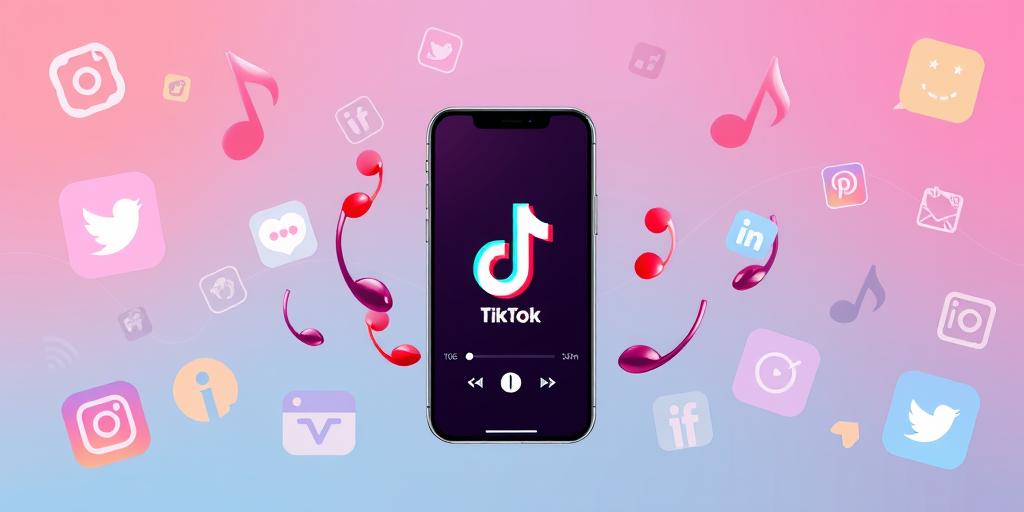The Role of TikTok and Social Media in Music Discovery (2025)
The landscape of music discovery has undergone a seismic shift in recent years, largely driven by the proliferation of social media platforms. By 2025, this influence has only intensified, with TikTok solidifying its position as a dominant force in shaping musical tastes and trends. This article explores the multifaceted role of TikTok and other social media platforms in how music is discovered, consumed, and ultimately, succeeds in the modern era.
The TikTok Effect: A New Paradigm for Virality
Tiktok’s short-form video format is perfectly suited for music discovery. A catchy 15-second clip can launch a song into the stratosphere, propelling unknown artists to overnight fame. The platform’s algorithm, designed to maximize user engagement, plays a crucial role in this process. Songs that resonate with users are quickly amplified, reaching a global audience with unprecedented speed. This virality is no longer a matter of luck; it’s a predictable outcome of creating music that aligns with TikTok’s trends and challenges.
Key Aspects of TikTok’s Influence:
- Trend-Driven Discovery: Songs that become associated with popular challenges or dance trends experience exponential growth. Artists and labels are increasingly tailoring their releases to capitalize on these trends.
- Democratization of Music Promotion: TikTok provides a level playing field for emerging artists, allowing them to bypass traditional gatekeepers and connect directly with fans. This has led to a surge in independent music finding mainstream success.
- Genre Blurring: The platform’s algorithm exposes users to a wide range of genres, often blending them in unexpected ways. This has contributed to the rise of hybrid genres and a more eclectic musical landscape.
Beyond TikTok: The Broader Social Media Ecosystem
While TikTok reigns supreme, other social media platforms also play a significant role in music discovery:
- Instagram: Used for visual promotion, behind-the-scenes content, and artist-fan engagement.
- YouTube: Remains a hub for music videos, live performances, and longer-form content.
- Twitter: Serves as a platform for real-time discussions, news updates, and artist interactions.
- Twitch: Growing in importance for live music streaming and virtual concerts.
These platforms create a synergistic ecosystem where music is shared, discussed, and experienced in diverse ways. Artists must strategically leverage each platform to maximize their reach and impact.
The Impact on the Music Industry
The rise of social media as a primary source of music discovery has profoundly impacted the music industry:
- Shorter Song Lengths: Recognizing the limited attention spans of social media users, artists are increasingly creating shorter, more concise songs optimized for virality.
- Focus on Hooks and Catchiness: The emphasis is on creating instantly memorable hooks that can grab attention within seconds.
- Data-Driven Decision Making: Labels are using social media analytics to inform their marketing strategies, identify emerging trends, and tailor their releases to specific audiences.
- Increased Importance of Visuals: Music videos and visual content have become more crucial than ever, as they are essential for capturing attention on visually-driven platforms like TikTok and Instagram.
Challenges and Considerations
While social media offers unprecedented opportunities for music discovery, it also presents challenges:
- Ephemeral Trends: Trends on social media are fleeting, and songs can quickly fade from popularity.
- Algorithm Dependency: Artists are at the mercy of algorithms, which can change without notice, impacting their visibility.
- Copyright Issues: Unauthorized use of music on social media platforms remains a persistent problem.
- Authenticity Concerns: The pressure to create viral content can lead to a lack of authenticity and artistic integrity.
The Future of Music Discovery
As social media continues to evolve, its role in music discovery will only become more pronounced. Emerging technologies like augmented reality (AR) and virtual reality (VR) are likely to create new and immersive ways for fans to experience music. The key for artists and labels will be to adapt to these changes, embrace innovation, and find creative ways to connect with audiences in an increasingly digital world.
Conclusion
TikTok and social media have revolutionized the way music is discovered and consumed. By understanding the dynamics of these platforms, artists can leverage their power to reach new audiences, build their brands, and achieve success in the ever-evolving music industry. While challenges exist, the opportunities for innovation and creativity are immense, paving the way for a vibrant and diverse musical landscape in 2025 and beyond.
